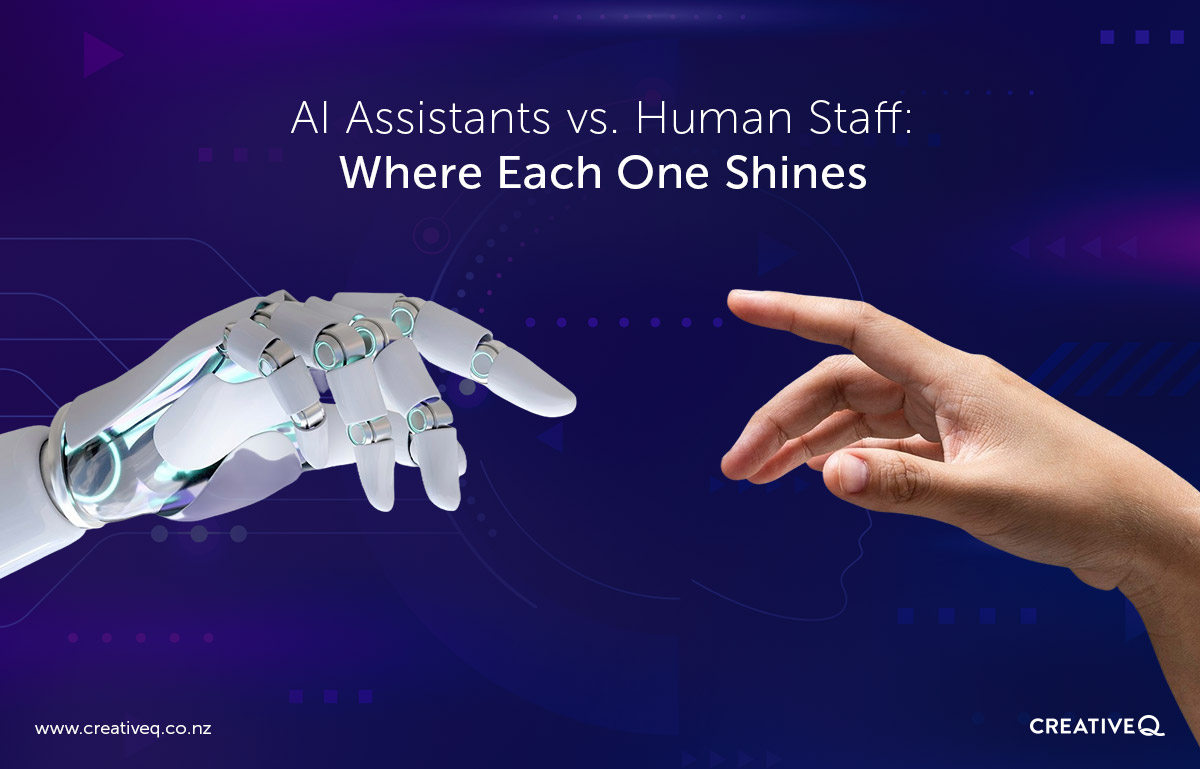AI assistants are no longer a novelty – they’re becoming a practical part of modern business. But as more organisations start exploring automation and AI tools like ChatGPT, it raises a fair question: What should we automate, and what’s still best left to real people?
Here’s how to think about the strengths of each, and how AI and humans can work better together – not compete.
Where AI Assistants Shine
1. Repetitive Tasks
AI is excellent at handling the same task over and over again – quickly and without fatigue. Whether it’s responding to frequently asked questions, triaging support tickets, or generating draft reports, AI assistants can take the load off your team.
2. Instant Access to Large Information Sets
Need to search through hundreds of documents, product manuals, or old emails? An AI assistant can scan and retrieve information in seconds – something a human might take hours to do.
3. 24/7 Availability
Unlike humans, AI doesn’t sleep. That means customers or staff can get answers or support any time – ideal for after-hours queries, time-sensitive requests, or global operations.
4. Scalability Without Cost Explosion
AI doesn’t get overwhelmed when volumes go up. If you suddenly have 10x more customer queries during a product launch, your AI assistant can handle the spike without needing overtime or temporary staff.
5. Accuracy in Structured Environments
If your business has clear processes or rules, AI can follow them consistently. It won’t forget steps, skip forms, or misplace files.
Where Human Staff Still Lead
1. Emotional Intelligence
AI can simulate polite language, but it can’t truly empathise. When situations are sensitive, complex, or emotionally charged, humans still offer the understanding and flexibility customers appreciate.
2. Complex Problem Solving
AI excels at pattern recognition, not creative reasoning. If a task requires nuance, judgement, or strategic thinking – your people are still your best asset.
3. Building Relationships
Trust, loyalty, and rapport are built through real human connection. Sales, leadership, coaching, and negotiation are all areas where people thrive.
4. Navigating Ambiguity
AI relies on clear inputs. When the path is undefined or the situation is messy, human adaptability is what gets things done.
The Future Is Hybrid
The best results come from combining the strengths of both. AI can handle the heavy lifting – freeing up your human team to do their best, most meaningful work.
Start small. Automate one repetitive task. Add one AI assistant to support your staff. From there, the possibilities grow.
Thinking about integrating AI into your team?
Let’s chat about where it fits – and where it shouldn’t.
Book an AI discovery session with our team. Get in touch today.
